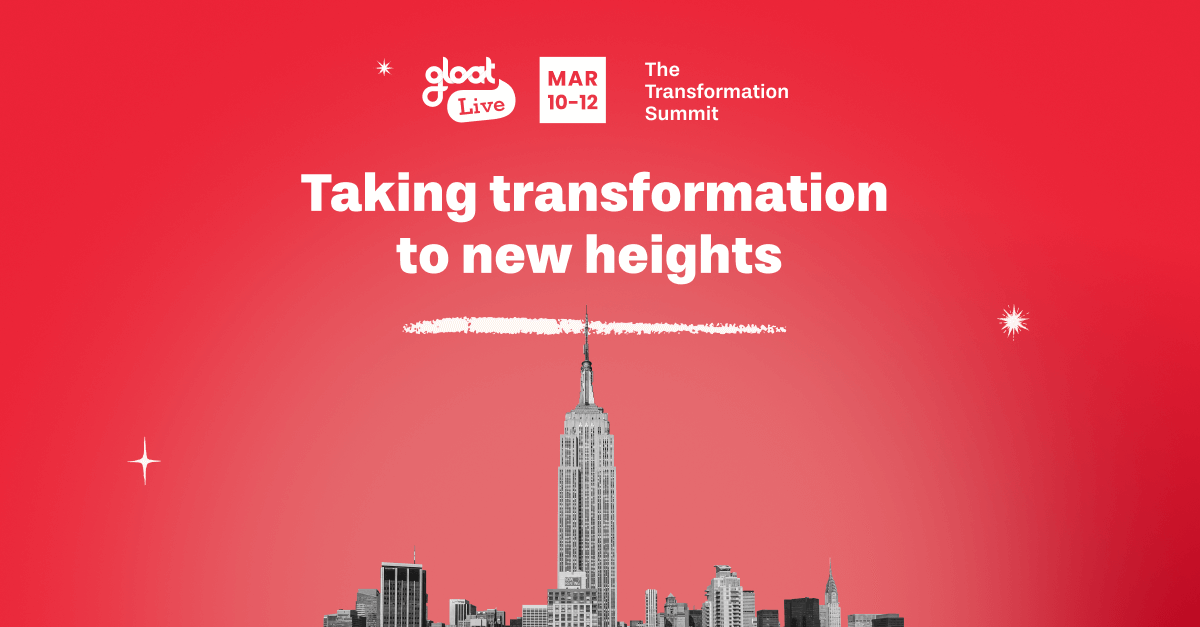Make mindset matter: The organizational readiness plan
How HR leaders can encourage their workforce to develop a growth mindset

The past decade of work has made one thing obvious: change is happening faster than ever, and companies must respond quickly to survive. As talent shortages grow and skills needs evolve, staying on top of industry-wide shifts is becoming an issue of how to enact change—not whether it’s necessary or not.
Though the need for adaptation is apparent, organizational capability to facilitate necessary change is lagging. Only 18% of organizations indicated they were “very highly effective” or “highly effective” at analyzing the gap between the organization’s future workforce requirements and current workforce skills. Large enterprises are inherently at greater risk of falling behind due to their sheer size and the effort needed to enact company-wide changes.
More often than not, companies are slow to adopt new talent strategies simply because they don’t believe they’re capable of it. Dramatic change can be seen as a gamble; however, without strengthening their resolve to make necessary adaptations, organizations risk falling behind in a rapidly-evolving world of work.
What is organizational readiness?
Though not commonly thought of in Human Resources today, organizational readiness is becoming a vital part of the department’s function in large enterprises. By definition, the term refers to a company’s shared resolve to implement a change, and a shared belief in its collective ability to do so.
Broadly, the 3 main contributors to organizational readiness are evidence, context, and facilitation:
- Evidence refers to the nature and strength of information available to leadership when potentially implementing a change.
- Context is the environment or setting in which the proposed change is to be implemented.
- Facilitation is the capacity or types of support needed to help people change their attitudes, behaviors, skills, and ways of thinking or working.
By assessing these three qualities in an organization, HR leaders can determine whether or not a company can successfully implement transformative change, like adopting workforce agility in favor of traditional, rigid hierarchies. Though the benefits of creating a mobile workforce might be apparent to HR leaders—better efficiency, the ability to match talent with projects and opportunities that match their skills, and greater manager insight into the skills available to them—creating that same sense of buy-in across the entire organization can be difficult.
But as more companies look to enable solutions like talent marketplaces, ensuring the organization is prepared for change is a crucial first step to achieving success.
How workforce agility enhances organizational readiness
Doing away with 20th-century organizing principles is no small feat, especially for large companies that span continents and have experienced past success with traditional work structures. With multiple stakeholders, beliefs, and ideas on how to best continue forward, company leadership plays a critical role in building trust throughout the organization and making a case for why change is necessary.
Hesitancy to disrupt the status quo may feel like the “safe” bet: what worked once will work again, and going too far from the known can be seen as an unnecessary risk by leadership. What this mindset misses is that historic organizing principles were built on the realities of their time, and as we build a more connected, faster-paced world, maintaining stagnant business principles is simply an anachronism.
How 3 enterprises mastered organizational readiness with a workforce agility platform
If leadership remains wary of change, seeing how other enterprises successfully implemented workforce agility platforms can help get executives on board.
When the institution wanted to find a better way to connect its people to opportunities to help prepare them for a future of cryptocurrency and NFTs, implementing their workforce agility platform proved to be the answer. With more than 23,000 employees around the globe, connecting them all to valuable opportunities meant embracing digital workspaces.
To date, Mastercard has seen savings of $21 million through internal mobility and unlocked more than 100,000 hours of capacity. The flexibility and adaptiveness of its platform are enabling new ways of work while engaging its workforce like never before.
As Chief Talent and Organizational Effectiveness Officer Lucrecia Borgonovo notes, “It’s just incredible to see the ingenuity of some of our leaders in terms of how they leverage the platform, whether they have somebody that is going on leave or how they think about breaking up open jobs into smaller projects.”
With a history of excellence dating back to its founding in 1865, HSBC knew that its success in the 21st century relied on preparing for the future of work. More than 200,000 employees needed to gain future-fit capabilities to keep the organization competitive, so leaders prioritized a skills-based strategy to make it a reality.
“If we carried on the way we were, we were probably going to lose,” Hamish Nisbet, Group Head of Resourcing at HSBC, notes. “So we had to think about more impactful, more up-to-date, more contemporary ways that would encourage our employees to grow their skills and meet our future needs.”
Today, 45% of HSBC’s projects are accomplished through cross-functional teams and roughly 60,000 hours of work have been unlocked by breaking down organizational silos. By emphasizing the role of a talent marketplace in its core function, Nesbit notes that the company is ready to embrace the future of work.
“The idea that we now know with greater certainty what skills sit where and what aims people have gives us a much stronger platform to think about increasing our internal mobility,” Nesbit says. “Which in turn retains our global corporate knowledge and builds employee engagement as they start to understand that more and more of their goals and ambitions can be realized within HSBC.”
Patrick Hull, VP Future of Work at Unilever, understood that the leading consumer goods company needed to implement reskilling and upskilling opportunities that reflected its future business landscape by 2025. The company focused on emphasizing experiential learning by enabling purpose-driven work, connecting employees with projects that aligned with their interests and passions.
“Some of our secret sauce is around purpose,” Hull notes. “We believe that a lot of the talk around upskilling is treating people like they’re widgets. In reality, each person is unique and has a unique set of passions and strengths. So we know we need to always start our reskilling journey from a place of purpose.”
Unilever’s talent marketplace was rolled out to its entire workforce after the success of an initial pilot program. The company notes a 41% improvement in overall productivity and roughly 700,000 hours of unlocked work, with 70% of assignments being filled with cross-functional teams.
Putting skills at the heart of organizational readiness
Every company will need to take different specifics into account when determining its organizational readiness—however, all businesses must take action. Skills are continuing to gain prominence over static job titles in the new world of work, and being equipped to facilitate that change means being ready to adopt innovative workforce structures.
No company is completely static, and neither are the skills that power them. To see how you can help prepare your organization to fuel a dynamic exchange of talent and skills, learn how to put skills at the center of your business transformation.




